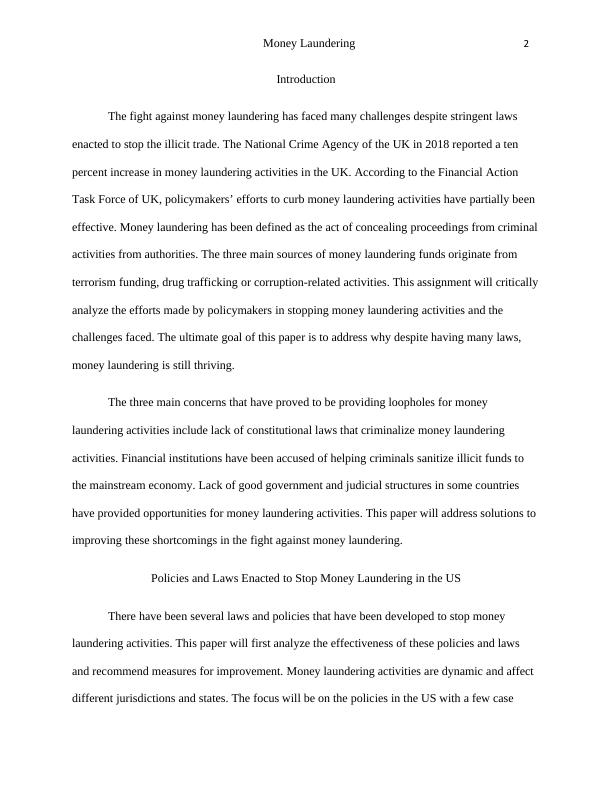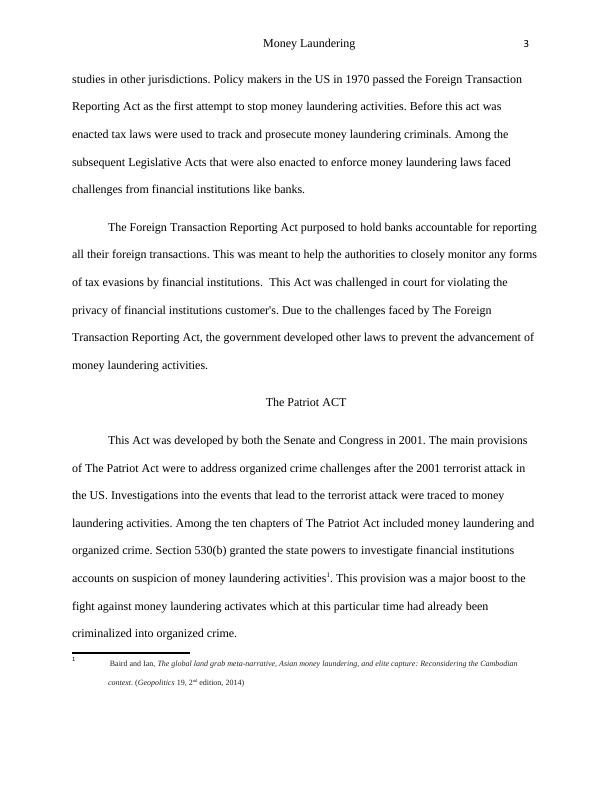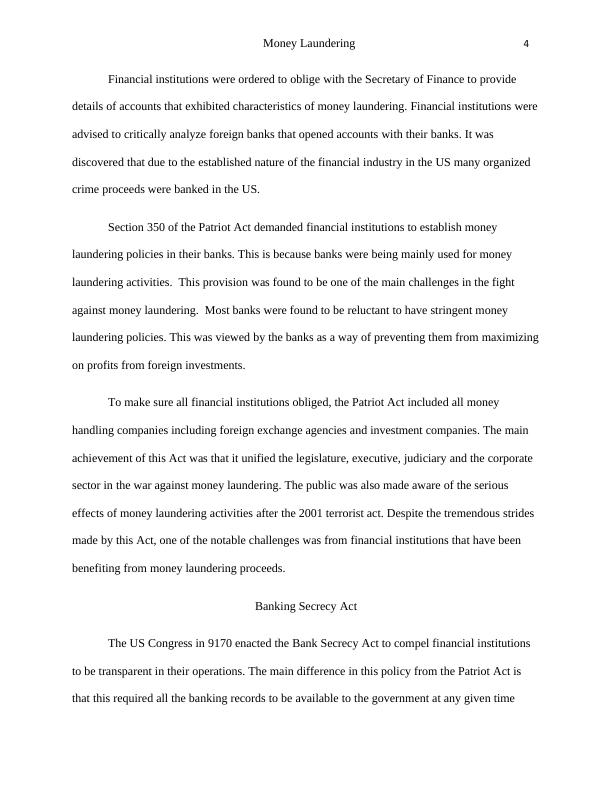Why Money Laundering Persists
19 Pages5048 Words54 Views
Added on 2023-01-20
About This Document
This assignment critically analyzes why money laundering persists despite many laws and policies. It explores the challenges faced in implementing money laundering laws and offers solutions to improve the fight against money laundering. The paper focuses on the policies and laws enacted in the US, such as the Patriot Act and the Banking Secrecy Act, and discusses their effectiveness. The ultimate goal is to address why money laundering is still thriving despite having many laws.
Why Money Laundering Persists
Added on 2023-01-20
ShareRelated Documents
End of preview
Want to access all the pages? Upload your documents or become a member.
(PDF) Money Laundering and Abuse of the Financial System
|11
|2376
|42
Human Rights, Terrorism and Counter-terrorism
|8
|2104
|35
Journal of Financial Crime (2020)
|15
|3346
|17
Money Laundering Scheme Case Study
|8
|1669
|18
Money Laundering: Nigerian Laws and Red Flags
|8
|2254
|419
Deutsche Bank, BofA, JPM Drawn into Danske Probe - Article Review
|5
|874
|396




